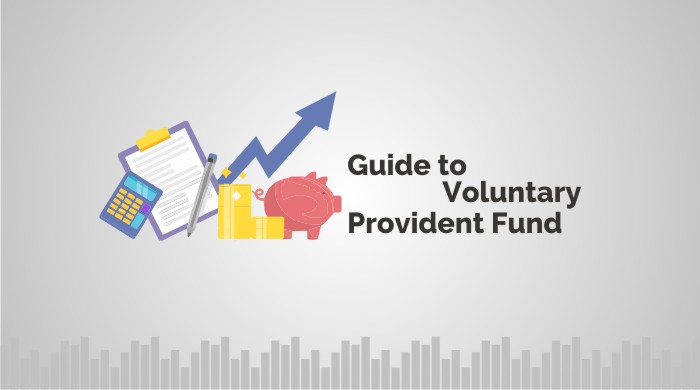![]()
What is Voluntary Provident Fund?
Voluntary Provident Fund (VPF) – Voluntary Retirement Fund is the voluntary fund contribution from the employee towards his provident fund account. This contribution is beyond the 12% of contribution by an employee towards his EPF. The maximum contribution is up to 100% of his Basic Salary + Dearness Allowance + Fixed Components*. (As per judgement of supreme court)
Interest is earned at the same rate as the EPF.
Who can invest in Voluntary Provident Fund?
A VPF is an extension of the EPF. The VPF option is available only to salaried individuals who receive their monthly payments through a specific salary account.
Benefits of Voluntary Provident Fund
The VPF falls under the EEE category ( EEE – exempt on contribution; exempt from the principal; exempt on interest) making it an excellent tax saving option. It also helps the employee amass a sizeable savings portfolio and help him during big life milestones.
Other benefits are:
a. Safe Investment Option
The scheme is managed by the Govt of India with fixed interest accrual. Hence, it is considered as a risk-free investment compared to the long-term investment ones offered by other private players.
b. Easy to Apply
To open a VPF account, an employee has to approach his HR/Finance team and advise them to raise a request for an additional contribution in the VPF through a registration form. The existing EPF account will serve as the additional VPF account.
c. High returns
The interest is 8.65% per annum under this scheme. It varies. Contributions up to 1.5 lakhs PA and interest accrued is exempt from tax under Section 80C, resulting in higher returns in a long-term perspective.
d. Easy transfer
The account can be transferred from one employer to another upon changing jobs.
Withdrawal facilities
The fund allows partial withdrawals as loans with also the possibility of complete withdrawals. If the withdrawal happens before the 5-year minimum tenure, then tax will be applicable on the accumulated maturity amount. Once the employee resigns or retires from the employment the final maturity amount is paid to him. At the time of the untimely death of the account holder, the nominee can get the possession of the accumulated fund in the VPF account.
The VPF fund is mainly popular as the accumulated money can be withdrawn at any given time. In case of an unforeseen financial emergency, one can always fall back to his VPF account. The account can be broken for many reasons which include :
a. Payments of medical bills for the individual and his kin
b. Cost-intensive events like higher education and marriage
c. Payments for house construction or purchase of new land/house
FAQs on Voluntary Provident Fund
Q: How are VPF and EPF different from each other?
A: VPF is the extension of EPF. In an EPF account, a person has to mandatorily give 12% of his Basic Salary + Dearness Allowance + Fixed components towards the fund. In a VPF, it is a voluntary contribution with the maximum limit at 100%.
Q: Who is eligible to open a VPF account?
A: All employees who are on a company’s payroll are eligible to open a VPF account.
Q: Will my VPF account get affected if I change jobs?
A: The VPF account is linked to your Aadhar Card. So, it is very easy to transfer your account from one employer to another.


Once I open VPF account so is it to convert VPF to EPF account?.
No it is voluntary and it can’t be converted to EPF.
For more information: http://www.oneclik.in or call: +91-90330-16939